
2019/10/29 - 2019/10/29
1084位(同エリア1446件中)
![]()
nomonomoさん
- nomonomoさんTOP
- 旅行記5305冊
- クチコミ9084件
- Q&A回答332件
- 6,549,724アクセス
- フォロワー104人
この旅行記のスケジュール
2019/10/29
この旅行記スケジュールを元に
ナポリ旧市街の真ん中の教会,サンタ・キアーラ。裏にある回廊・庭園が有名です。陶板の装飾がとてもうつくいい,いいところです。
- 旅行の満足度
- 4.0
- 観光
- 4.0
- 交通手段
- 徒歩
- 旅行の手配内容
- 個別手配
-
カラヴァッジョを見て,精神的に疲れました。
-
彼の絵をみると,ほんとうに疲れます。
-
精神的に,突き刺さってくるのです。
-
さてと,
-
つぎはどこへ行きましょうか。
-
そう,
-
ここ。
-
でもさきに,
-
庭園へ行きましょう。
サンタ キアーラ教会 寺院・教会
-
本堂は無料ですが,
-
庭園(博物館つき)は有料です。
-
こんな庭園。
-
中庭かな。
-
この陶板。
-
列柱。
-
ナポリです。
-
南イタリア的かな。
-
きれいですね。
-
すばらしいい。
-
絵もおもしろい。
-
素朴。
-
庶民的。
-
農民の生活かな。
-
いいですね。
-
静かなところ。
-
ナポリの名所です。
-
向こうが教会。さっき,本堂とよんだところです。
-
回廊もすばらしい。
-
回廊に壁画。
-
端正な回廊。
-
イタリアの美しさ。
-
陶板。
-
大きくなく。
-
小さくなく。
-
しずかな回廊。
-
壁画も。
-
資料館(博物館)に入ります。
-
いろいろと説明。
IL SITO DI S. CHIARA: DALLA CITTA' GRECO-ROMANA ALLA BASILICA ANGIOINA
Neapolis si estendeva su un pianoro protese sul mare delimitato da una cinta muraria in opera quadrata
di tufo rinvenuta a Nord e a Sud a Via Foria e Corso Umberto e ad Est ed Ovest a Via Costantinopoli e a
Forcella.ln tale perimetro viene pianficato agli inizi del V sec. a.C. l'impianto urbano costituito dai tre
decumani e dagli assi ortogonali minori.
Intorno al I sec. d.C. si assiste ad un fernomeno di "espansione edilizia", a meridione nell'area ubicata fra
Corso Umberto ed il mare, e a occidente in quella compreso fra i valloni di Via S. Anna dei Lombardi - Via
Monteoliveto e piazza S. Domenico.
Le terme rinvenute nel convento di S. Chiara rappresentano la principale testimonianza dell'ampliamento
sud-occidentale della città. Ad esse si possono aggiungere le strutture di abitazione di età imperiale rinvenute
dì recente in via S. Maria La Nova e più a valle un altro edificio termale scoperto a piazza Borsa.
Tali evidenze si collocano lungo le vie di collegamento con il porto e con l'area flegrea e sì estendono su
un sito che dalla fine del IV alla metà del III se. a.C. rivestiva destinazione funeraria.
I monumenti mostrano una fiorente fase edilizia dallo scorcio del l sec. d.C. sino ad epoca tardo-antica.
Più incerte sono le vicende successive del sito: l'area fu inclusa nell'ampliamento della cinta muraria della
metà del V secolo d.C. creata per opporre resistenza alla munaccia dei Goti; il convento di S. Chiara e'
inoltre ricordato per la presenza al suo interno di tratti di mura e di torri relativi alla fortificazione che recingeva
la città nell'XI secolo. In tale periodo la stretta vicinanza all'area della, cinta muraria rende probabile
che esso fosse scarsamente occupato sino alla erezione della chiesa e del convento.
Ad epoca medioevale risalgono due ambienti inglobati nei vani di servizio compresi tra il chiostrino delle
cucine ed il muro perimetrale del complesso le cui caratteristiche rimandano a modelli dell'architettura
islamica. -
英訳。
THE SITE OF S. CHIARA: FROM THE GREEK-ROMAN CITY TO THE BASILICA ANGIOINA
Neapolis extended on a plateau stretched out over the sea, bounded by a square wall
of tufa found in the north and south in Via Foria and Corso Umberto and in the east and west in Via Costantinopoli and
Forcella.ln this perimeter is planned at the beginning of the 5th century. B.C. the urban system consisting of the three
decumani and minor orthogonal axes.
Around the I century A.D. there is a fernomeno of "building expansion", to the south in the area located between
Corso Umberto and the sea, and to the west in the one between the valleys of Via S. Anna dei Lombardi - Via
Monteoliveto and Piazza S. Domenico.
The baths found in the convent of S. Chiara represent the main testimony of the enlargement
south-west of the city. To these can be added the structures of the imperial age found
recently in via S. Maria La Nova and further downstream another thermal building discovered in piazza Borsa.
These evidences are located along the connecting roads with the port and the Phlegraean area and extend over
a site that from the end of the IV to the middle of the III se. B.C. it was a funerary destination.
The monuments show a flourishing building phase from the end of the 1st century. A.D. until the late ancient period.
The subsequent events of the site are more uncertain: the area was included in the enlargement of the walls of the
mid-5th century AD created to oppose resistance to the munetti of the Goths; the convent of S. Chiara is
also remembered for the presence within it of sections of walls and towers related to the fortification that fenced off
the city in the 11th century. In this period the close proximity to the area of ??the walls makes it probable
that it was scarcely occupied until the erection of the church and convent.
Two environments date back to the Middle Ages, incorporated into the service areas between the small cloister
kitchens and the perimeter wall of the complex whose characteristics refer to architectural models
Islamic. -
館内。
-
レリーフ。
-
お釈迦様みたいですね。
-
レリーフ。
-
写真との対応。
-
上下。
-
おっと。
-
おそろしい。
-
これも。
-
庭園に,
-
名残を惜しんで,
-
教会内へ。
-
ステンドグラス。
-
薔薇窓。
-
祭壇。
-
中央。
-
ご本尊。
-
キリスト。
-
これは。。。
-
祭壇。
-
ステンドグラスがうつくしい。
-
全景。
-
ステンドグラス。
-
ステンドグラス。
-
爆撃の跡かな。
-
全景。
-
同じく。
-
以上です。
-
さてと,ランチに行きましょう。
ガイ オディン (ベネデット クローチェ通り店) スイーツ
利用規約に違反している投稿は、報告する事ができます。
旅行記グループ
ノルウェージャン・エピック西地中海クルーズ
-
前の旅行記
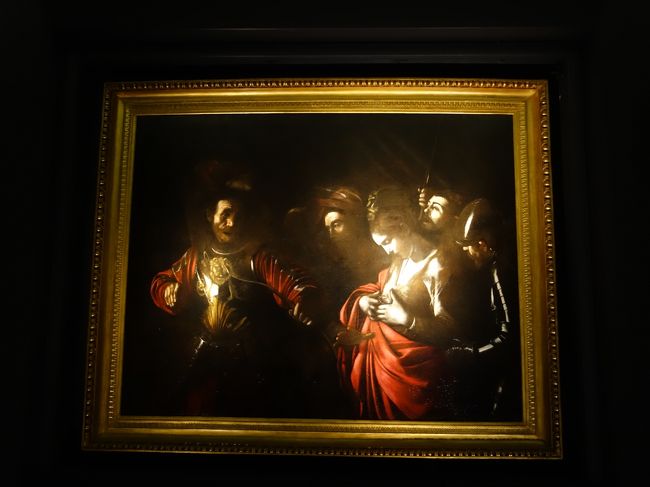
カラヴァッジョ最後期の作品を見る。魂の深さに感動する。
2019/10/29~
ナポリ
-
次の旅行記
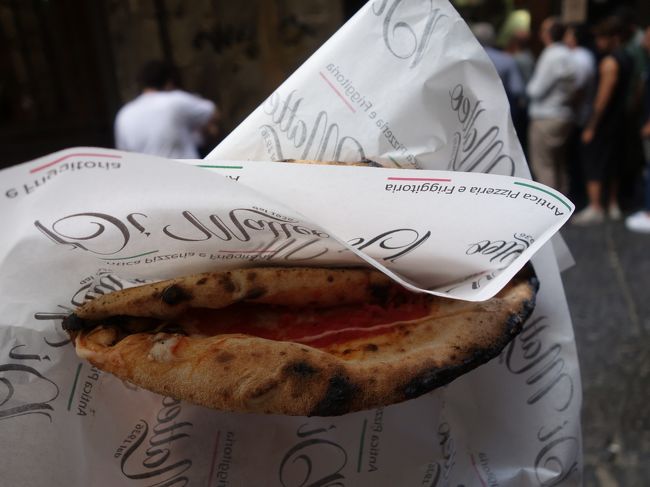
ナポリのランチは,もちろん,ナポリ・ピザ。ダ・ミケーレまで歩いていったのですが。。。。
2019/10/29~
ナポリ
-

Norwegian Epic で地中海クルーズ。(総集編)
2019/10/27~
バルセロナ
-
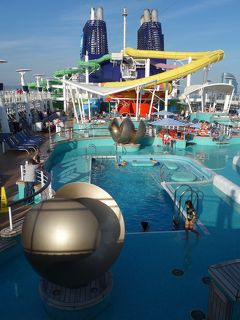
Norwegian Epic の船内探検(1)。カジュアル船です。アメリカ文化そのものです。
2019/10/28~
カプリ島
-

Norwegian Epic の船内探検(2)。食事は良かったり、イマイチだったり。
2019/10/28~
ポンペイ
-

Norwegian Epic の船内探検(3)。カフェテリアは中国語が飛び交っていた。
2019/10/28~
フィレンツェ
-
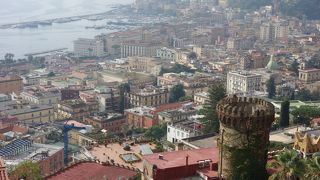
ナポリにきたら高いところに上りましょう。フニクラでヴォメロの丘へ。
2019/10/29~
ナポリ
-
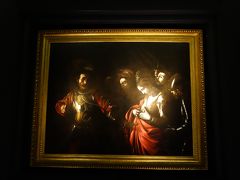
カラヴァッジョ最後期の作品を見る。魂の深さに感動する。
2019/10/29~
ナポリ
-

サンタ・キアーラ教会の回廊・庭園を見る。陶板タイルの装飾がうつくしい。
2019/10/29~
ナポリ
-

ナポリのランチは,もちろん,ナポリ・ピザ。ダ・ミケーレまで歩いていったのですが。。。。
2019/10/29~
ナポリ
-

ナポリにきたら,ババをいただきましょう。ババ抜き,ではナポリに来たことになりません。
2019/10/29~
ナポリ
-

トレド通りを歩く。ナポリの王道です。
2019/10/29~
ナポリ
-

スパッカ・ナポリを歩く。ナポリの下町です。
2019/10/29~
ナポリ
-

ウンベルト1世のギャッレリア,プレビシート広場とヌオーヴォ城を見て,我が家(船)に帰る。
2019/10/29~
ナポリ
-
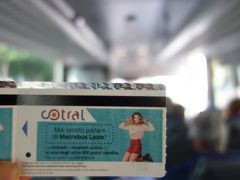
Civitavecchia から Tarquinia まで路線バスを乗り継いで。初めての土地で。。。
2019/10/30~
チビタベッキア
-
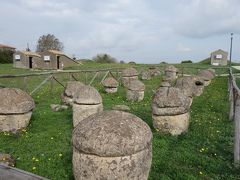
Tarquinia。エトルリア文明の遺跡を求めて。
2019/10/30~
ラツィオ州
-

Tarquinia のエトルリア文明の遺跡。高松塚を思い出す墳墓内の壁画。
2019/10/30~
ラツィオ州
-

Tarquinia のエトルリア文明の遺跡。(2) 壁画がすばらしい。紀元前にこの文明。
2019/10/30~
ラツィオ州
-

Tarquinia は城壁に囲まれた丘の上の都市。塔もおおい。
2019/10/30~
ローマ
-
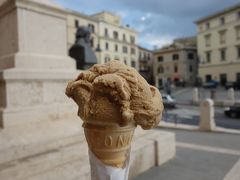
Tarquinia の国立博物館をみる。そして,ジェラートで一服。いい街です。
2019/10/30~
ローマ
-

Tarquinia から Civitavecchia までバスで帰る。帰りは直通です。船の近くで下りました。
2019/10/30~
その他の観光地
-

Norwegian Epic の船内探検(4)。フレンチ・レストラン Le Bistro はおいしかった。
2019/10/31~
シチリア島
-

Livorno からLucca まで鉄道の旅。Pisa で乗り換えです。
2019/10/31~
リボルノ
-

Lucca では,まず,ドゥオーモを目指す。
2019/10/31~
ルッカ
-

Luccaでピサ・ルッカ様式の教会を見る。
2019/10/31~
ルッカ
-
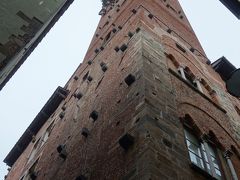
Lucca では、塔に登りたかったのですが、あいにくの雨で、割愛。
2019/10/31~
ルッカ
-
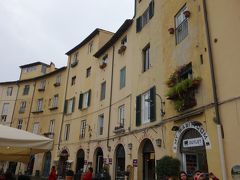
ローマの競技場跡。Piazza Anfiteatro. 広場を取り巻く建物群がおもしろい。
2019/10/31~
ルッカ
-

ルッカ。今日はハロウィーン。コスプレの人で、街はあふれかえっていました。
2019/10/31~
ルッカ
-

Lucca から Pisa まで鉄道のたび。こわい検札のおじさんが回ってきました。
2019/10/31~
トスカーナ州
-
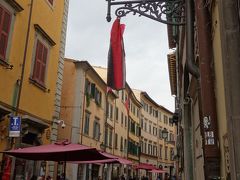
Pisa の街歩きは Corso Italia から始まります。そう,イタリアの中心なのです。
2019/10/31~
ピサ
-

Pisaで途中下車。目的は,もちろん,世界一のジェラートを食べるためです。
2019/10/31~
ピサ
-

Norwegian Epic の船内探検(5)。船内盛り上がりはイマイチ。別れが悲しくなかった。
2019/11/01~
メッシーナ
旅行記グループをもっと見る
コメントを投稿する前に
十分に確認の上、ご投稿ください。 コメントの内容は攻撃的ではなく、相手の気持ちに寄り添ったものになっていますか?
サイト共通ガイドライン(利用上のお願い)報道機関・マスメディアの方へ 画像提供などに関するお問い合わせは、専用のお問い合わせフォームからお願いいたします。
この旅行で行ったスポット
この旅行で行ったグルメ・レストラン
ナポリ(イタリア) の旅行記
旅の計画・記録
マイルに交換できるフォートラベルポイントが貯まる
フォートラベルポイントって?

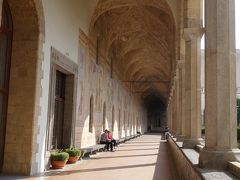
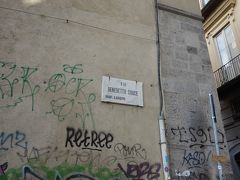







































































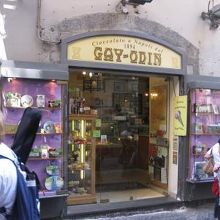




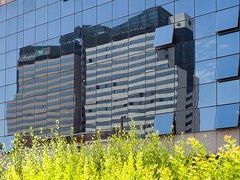




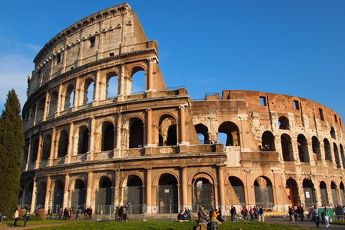


旅行記グループ ノルウェージャン・エピック西地中海クルーズ
0
68